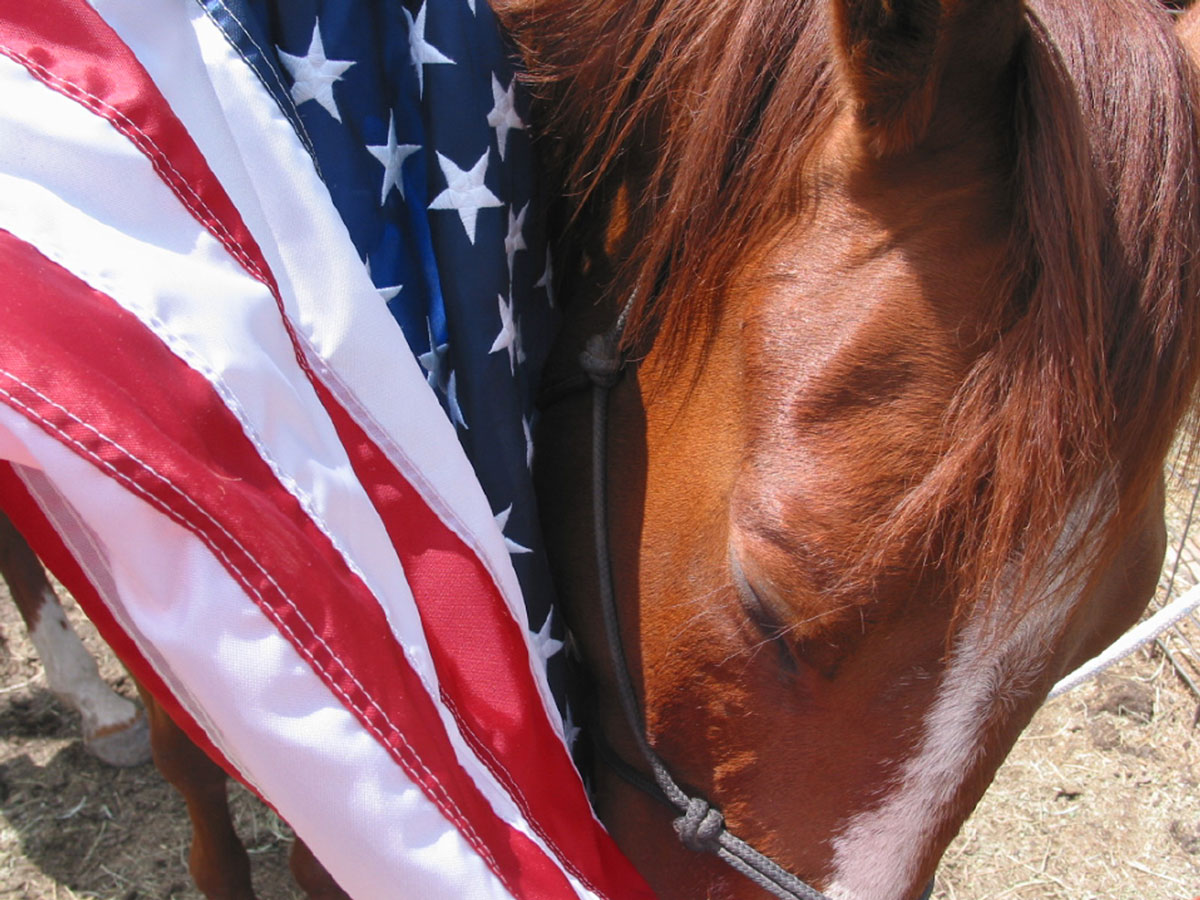
Rodeo and parade horses know flag bearer duties are a part of the gig. Over time it becomes second nature to be around flapping, waving banners. But at the start of learning this skill, horses need a positive introduction to the flag. When a horse flinches at a flapping banner or rippling flag, he is tuning into to his natural flight instinct as a prey animal.
Introduction to the flag starts on the ground. Position the horse is a space that is far enough away from the object so that he isn’t anxious. Over time, you can progressively move closer, but it is important not to rush and spook the horse.
It’s also important to remember to find a reasonable threshold for introduction and stop before pushing a horse over the edge. It takes 12 to 24 hours for the human brain to form a new, permanent pathway. It stands to reason that horses also need time to process learning, so you don’t want to belabor a new idea in a training session.
Break sessions into shorter timeframes. For example, it might be as few as spending five to 10 minutes a day working one step at a time until the horse becomes comfortable close to the flag.
Lisa Rakes, Captain of the Kentucky Horse Park mounted police, is one of the most decorated mounted police officers in the country, having trained the top-ranked Lexington Mounted Police unit horses and riders as the unit’s in-house trainer before taking over the Kentucky Horse Park mounted unit. Rakes offers this advice for introducing a flag.
1. Ask a barn mate to help you. Have one person hold the horse while the other holds the flag. Watch the horse for any signs of fear or anxiety.
2. After the horse is comfortable with the flag on the ground, grab a helper. One person will hold the horse and the other will wave the flag. “Don’t just grab the flag and start walking. This may not go well for you,” she said.
3. The next step is to get in the saddle and ride. Use your normal warm-up routine to take the edge of a horse before bringing the flag out. “I usually lean the flag up against a wall or rail so that I can touch the top of the pole from horseback,” Rakes said. “I will move the flag around slowly without picking it up.”
4. The final step is to pick the flag up and start walking with it. Rakes usually leaves the flag rolled up some so that it is not blowing around until she knows the horse is completely relaxed. As you progress, you can start to unfurl the flag.
It can help to have a flag-savvy horse work with a flag while you and your horse watch at a distance. You can slowly close up that distance until you are riding with the desensitized horse carrying a flag. As Rakes stated above, start with the flag rolled up and not flapping to give the horse a greater chance of success.
Also, if you have already desensitized your horse to touch on his whole body using a lead rope, plastic bags and other objects, introducing a flag should go more smoothly.
“Remember to make sure that the horse is good with the flag touching all parts of his body, including his hind end,” said Rakes. “And make sure he’s good with all that while you are on him at the walk. At some point, the wind will catch the flag just right and touch your horse on the hind end, and if you have not prepared him for that, it may not be a fun ride.”
One other piece of advice is that some trainers will place smaller “flags” or pieces of plastic around the horse’s normal living or work areas, such as the stall, turn-out paddock or arena. This allows the normally curious horse to explore the “flapping” objects with no pressure.


